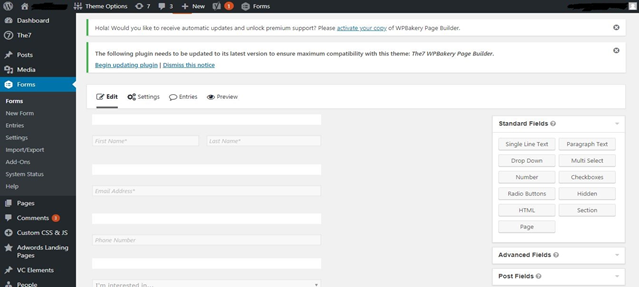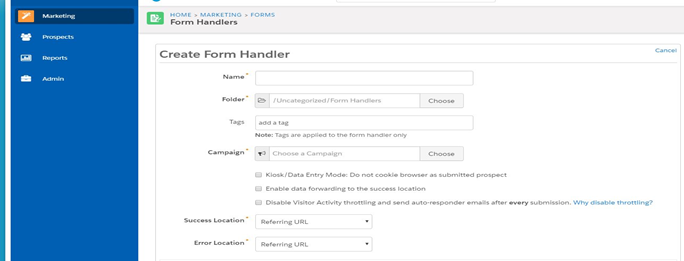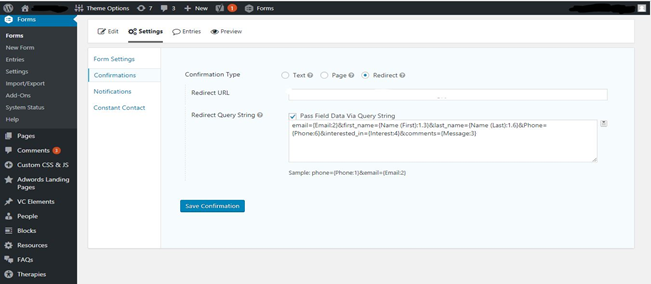The link between the two worlds
Over the past 20 years, B2B(Business to Business) marketing has emerged a great deal and is affecting the market as large as possible. It has really bridged the gap between the business and the consumer. Gravity forms to pardot is one such building tool that has become really popular in companies where Pardot B2B Marketing Automation is used extensively.
Now the question you must have is how to connect these two things together in a way that our requirements are met. This can be done by using a component in Pardot Integration called Form handler. So, let us get quickly to the details of it then.
Gravity…The Source
Gravity forms is a built-in plug-in for forms in WordPress and is used widely because of its numerous advantages which make it a robust and practical plug-in. But Why Use Gravity forms?
Easily Useable-Instinctive interface is the main USP of Gravity forms. A user can just click on the type of field he/she wants in the form. And from there this field is easily customizable by a simple drag (for its new position), giving radio button, defining set choices to name a few.
Privacy- Gravity forms have a secure structure that prevents any hacker to gain access to these forms and hence your forms become airtight inside WordPress.
Developer Friendly- Gravity gives you the freedom to modify the standard Actions/filters by your own functions with the help of useful hooks and filters provided by them.
Integrations with 3rd party- One of the primary advantages is the comfort with which it provides to connect with a 3rd party service. You will see how well it connects to Pardot for that matter.
Pardot…The Destination
Pardot Integration’s ability to tracking leads, capturing them, and nurturing them afterward, has been no secret in the Business to Business marketing. It’s uniqueness and in-depth process makes it a powerful tool to start with. These are some of the reasons which make you want to really churn the best out your business with the help of Pardot:-
Comprehensive Prospect tracking- Pardot has the ability to track readers of a website even before they get themselves registered which makes it really powerful. It also uses Progressive profiling which has a better conversion rate without damaging the customer’s experience.
Scoring and Grading System- Pardot provides a Dynamic scoring and Grading system which gives you a clear picture of how much a Prospect (Lead) is ready for sales based on the amount of prospect interaction to the content.
ROI calculation- It calculates the Return on your investments through detailed study and lets you differentiate between the performing Marketing Campaigns to the non-performing ones.
Integration with Salesforce– Pardot has a cohesive relationship with one of the best in the business which makes it even more powerful, i.e. Salesforce. Prospects of Pardot can be accessed through Salesforce very easily and can undoubtedly perform effectively throughout.
Let us now dive into the practical details of what we have been talking about. Given below are the steps you need to follow.
Steps to do it
The first step is to Create Gravity form which will be the source of Data.
- In Gravity WordPress, navigate to Forms -New Form
- Name your Gravity Form and create the source fields.

Now let’s jump to the Pardot form handler portion.
The Second Step is creating a Form handler in Pardot which has the fields in which we want the data of the forms to be stored.
- For this first, navigate to Marketing – Forms – Form Handler and press Add Form Handler.
- Name your Form handler and fill up the Mandatory fields.
- Create fields in which you want your data to be stored.

Okay, so we have created the two systems which have to be joined but let’s see how to do it.
This can be achieved by creating a Query string. You can understand the Query string as a formula that connects the Gravity form to a Pardot form handler.
- Navigate to your Gravity form Settings – Conformations – Edit default Confirmations- Select Redirect.
- Now go back to your Pardot Form handler and copy the Endpoint URL of the Form handler and paste it in the Redirect URL box.
In the box below (Redirect Query string) we have to pass the fields which have to be connected in a manner shown below and save

Now that your gravity form is ready to be tested, create a record with the appropriate fields.
CONCLUSION
One of the famous marketing expert and management consultants once said: “If you want something New, you have to stop doing something old.” This quote holds so true in the case of marketing in the current era. If better marketing and better sales are what we want, we have to change our strategies and methods to better recuperate with the surrounding world. Some years go by we will be looking at a completely different world driven by AI. Thanks to powerful tools like Pardot and Gravity forms, this is possible and can be fulfilled better. We at Mirketa, are involved in providing solutions for Pardot involving queries and would love to help you if any need be.
Leave A Comment